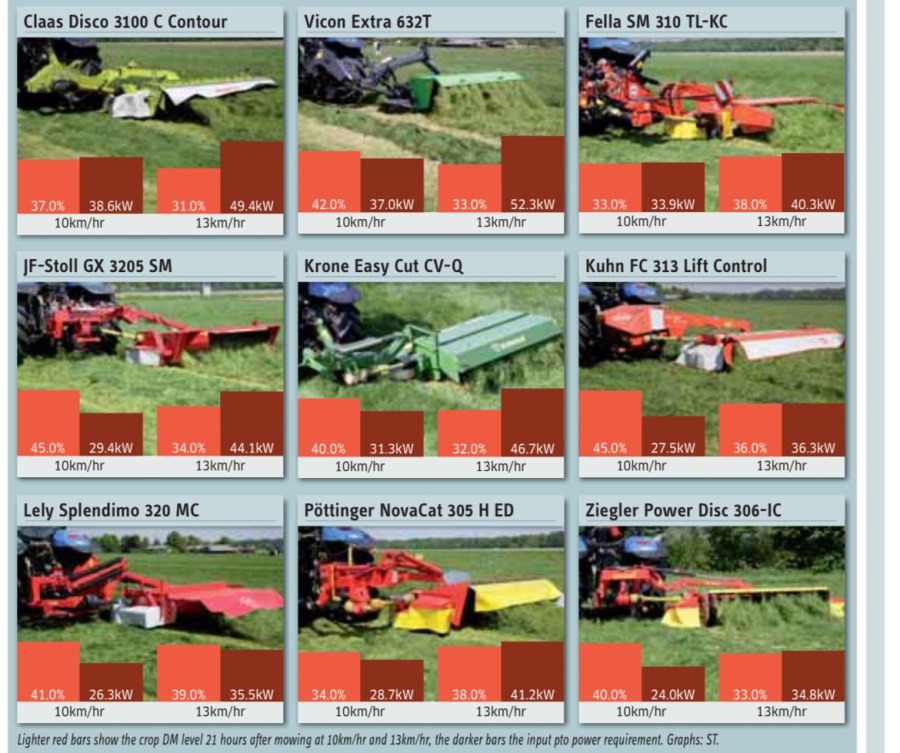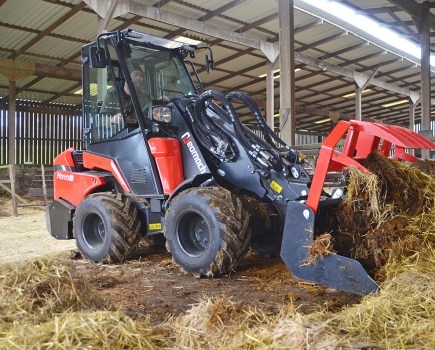Mower conditioner comparison (part I) … went to mow a profi test meadow. In this first instalment of our three-part mower test, we gather together nine mounted mower conditioners (3.0m) and see how their respective performances compare when faced with the same crop.
The ‘magnificent nine’ assembled for this test include one UK anomaly: In parts of mainland Europe, Vicon mowers are marketed as Deutz machines, hence the Deutz livery decorating the featured Vicon mower in this test. So, across the following six pages, wherever a UK reader sees Deutz green, he should think Vicon red.
Initial housework sorted, let’s proceed to test basics. Mower conditioners cut grass and then damage the crop’s waxy coating to speed up the wilting process. That’s the theory. To test the effectiveness of the nine mowers under review here, we carried out two passes at 10km/hr and 13km/ hr. In both cases, we measured how much power it takes to drive the mowers and how effective the conditioner element is in speeding up crop wilt (see the panel
on page 21 ‘How the measurements were taken’).
The test data reveal significant differences in wilting speeds, with the individual results shown in the graphs ‘Wilting at 10km/hr’ and ‘Wilting at 13km/hr’ (see overleaf); wilting is fastest in the swath mown at 10km/hr. JF-Stoll and Kuhn head our 10km/hr graph, their final samples of the test period recording a 45% DM. Both of these machines are fitted with rigidly mounted V-type plastic conditioning tines and, surprisingly, they both return relatively low power requirements: 27.5kW and 29.4kW for the Kuhn and JF-Stoll respectively (see individual bar charts on the adjacent page).
For more up-to-date farming news and reviews click here and subscribe now to profi for just £3.99 an issue.






